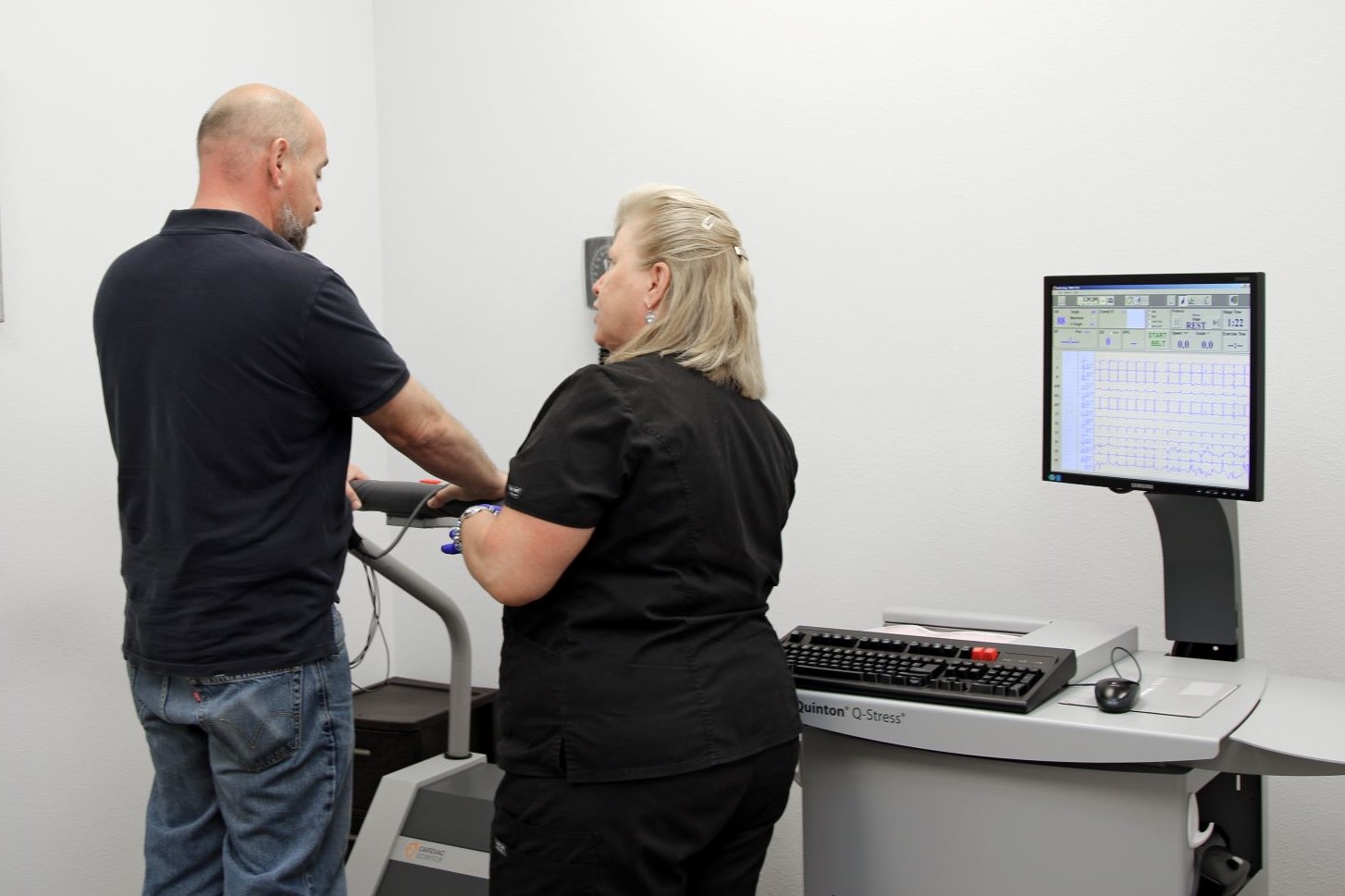Exercise Stress Test
The patient walks on a treadmill while hooked to an EKG machine. The EKG machine monitors the heart’s electrical rhythms as the patients starts walking progressively faster. Your blood pressure, breathing, and any signs of fatigue will be monitored as well. This test measures the heart’s ability to function during times it is working harder.
Patient Instructions / Instrucciones para el paciente:

Nuclear Stress Test
This is a nuclear medicine imaging test that can be used to help diagnose and manage heart disease. Patients undergoing a nuclear stress test are first injected with radioactive “tracer” via IV. The patient then waits 30-40 minutes to make sure the tracer is sufficiently absorbed into the bloodstream. Next, the patient has tiny patches called electrodes placed on their chest area. These are hooked up to an EKG machine which measures the heart’s electrical signal as the pictures are being taken. The patient lies flat on a table while the circular SPECT machine rotates around him or her, taking pictures of the tracer flowing in the bloodstream through the heart. It recreates the images in three-dimensional detail on a computer screen.
The patient will then take an exercise stress test either on a treadmill or with medication. If the patient in not able to exercise, they will receive a medicine called Lexiscan® through an IV, instead of going on the treadmill. Lexiscan® causes the heart to beat harder and faster, mimicking the effect of exercise.
When the heart is working at its hardest during the peak of the stress test, a radioactive substance is injected again into the patient’s veins. The patient waits 30 to 40 minutes, and again undergoes the same process of having pictures taken in the SPECT machine.
Our doctor will then compare the first and second set of images to see how the blood flows while the patient is at rest and during activity. The images can show where blood flow is restricted. Depending on the severity of the restricted blood flow, our doctor may suggest life-style changes, medication, and/or further testing such as an angiogram to confirm if there is a blockage in the artery that needs to be eliminated.
The entire process of the nuclear stress test takes about 3-4 hours.


